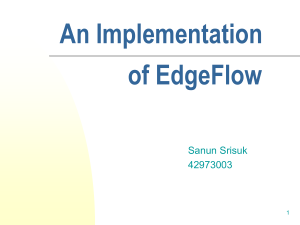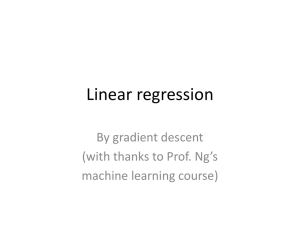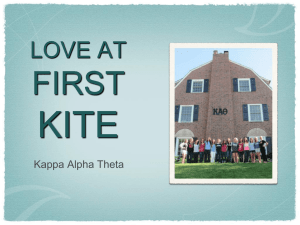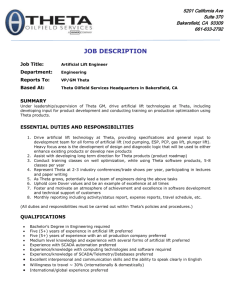Tutorial - School for Marine Science & Technology
advertisement
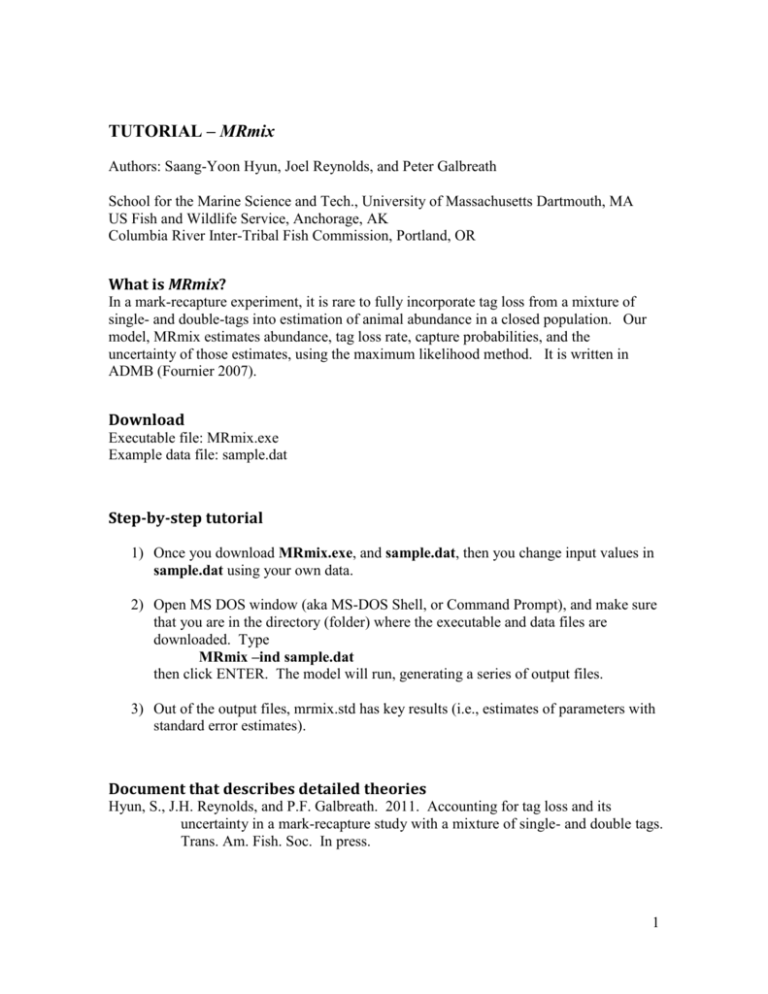
TUTORIAL – MRmix
Authors: Saang-Yoon Hyun, Joel Reynolds, and Peter Galbreath
School for the Marine Science and Tech., University of Massachusetts Dartmouth, MA
US Fish and Wildlife Service, Anchorage, AK
Columbia River Inter-Tribal Fish Commission, Portland, OR
What is MRmix?
In a mark-recapture experiment, it is rare to fully incorporate tag loss from a mixture of
single- and double-tags into estimation of animal abundance in a closed population. Our
model, MRmix estimates abundance, tag loss rate, capture probabilities, and the
uncertainty of those estimates, using the maximum likelihood method. It is written in
ADMB (Fournier 2007).
Download
Executable file: MRmix.exe
Example data file: sample.dat
Step-by-step tutorial
1) Once you download MRmix.exe, and sample.dat, then you change input values in
sample.dat using your own data.
2) Open MS DOS window (aka MS-DOS Shell, or Command Prompt), and make sure
that you are in the directory (folder) where the executable and data files are
downloaded. Type
MRmix –ind sample.dat
then click ENTER. The model will run, generating a series of output files.
3) Out of the output files, mrmix.std has key results (i.e., estimates of parameters with
standard error estimates).
Document that describes detailed theories
Hyun, S., J.H. Reynolds, and P.F. Galbreath. 2011. Accounting for tag loss and its
uncertainty in a mark-recapture study with a mixture of single- and double tags.
Trans. Am. Fish. Soc. In press.
1
References
Fournier, D.A. 2007. An introduction to AD Model Builder Version 8.0.2 for use in
nonlinear modeling and statistics. Otter Research Ltd., Sidney, B.C., Canada.
Codes in ADMB
DATA_SECTION
//Binary question for tag loss(=1), OR no loss of tag (=0);
init_int LossTag_NolossTag;
//Binary question: (i) both tags are identical non-permanent tags(=1), OR
//(ii) one tag is non-permanent and the other tag is permanent (=0);
init_int bothNP_oneP;
//1st sample for marking
init_number M_1_A; //number of animals single-tagged in color 1
init_number M_2_B; //number of animals double-tagged in color 2
//2nd sample for recapture or resight
init_number n2; //number of fish captured later (they include marked and
//unmarked fish); n2 in a common notation
init_number mA; //recoveries with only one tag in color 1
init_number mB; //recoveries with only one tag in color 2
init_number mBB; //recoveries with two tags in color 2
init_number rho_guess; //guess initial value of rho;
number n1; //total number of initially tagged animals
number R; //total recoveries = mA + mB + mBB;
number mU; //number of animals in the 2nd sample, which do not have tags
//mU = n2 - (mA + mB + mBB), if there is loss of a tag
//mU = n2 - (mA + mBB), else if no loss of a tag;
!!n1=(M_1_A+M_2_B);
int dim; //dimension in data and parameters between loss and no loss of a tag;
int rho_phz; //consider or ignore by the assumption
LOCAL_CALCS
if(LossTag_NolossTag==1) {
dim=4;
rho_phz=4;
}
else {
dim=3;
rho_phz=-4;
};
2
END_CALCS
vector celldat1(1,dim);
LOCAL_CALCS
if(LossTag_NolossTag==1) {
celldat1(1)=mA;
celldat1(2)=mB;
celldat1(3)=mBB;
celldat1(4)=n2-(celldat1(1)+celldat1(2)+celldat1(3)); //animals with no tags
R=(mA+mB+mBB);
}
else { // No loss of a tag
celldat1(1)=mA;
celldat1(2)=mBB;
celldat1(3)=n2-(celldat1(1)+celldat1(2)); //animals with no tags
R=(mA+mBB);
};
END_CALCS
!!mU=n2-R;
number N_low;
number N_up;
number N_guess;
vector N_boundary(1,2);
!!N_boundary(1)=n2;
!!N_boundary(2)=n1;
!!N_guess=(n1+1)*(n2+1)/(R+1)-1;
!!N_low=max(N_boundary);
!!N_up=N_guess+N_guess*100/100;
number p_guess; //capture probability
!!p_guess=(n1+n2)/(2*N_guess);
number stp; //single tag proportion, stp = M_1/n1;
!!stp=M_1_A/n1;
!!cout<<"R "<<"n1 "<<"N_low "<<"N_up "<<"stp"<<endl;
!!cout<<R<<" "<<n1<<" "<<N_low<<" "<<N_up<<" "<<stp<<endl;
PARAMETER_SECTION
init_bounded_number N(N_low,N_up,1); //N: abundance;
3
init_bounded_number p1(0.0,1.0,2); //capture prob at the 1st sample;
init_bounded_number p2(0.0,1.0,3); //capture prob at the 2nd sample;
init_bounded_number rho(0.0,1.0,rho_phz); //rho: tag loss rate;
vector theta(1,dim+1); //cell prob
vector celldat2(1,dim+1); //cell data 2;
number Esc; //unknown escapment = N-n2
objective_function_value f; //negative total logarithm
INITIALIZATION_SECTION
N N_guess;
p1 p_guess;
p2 p_guess;
rho rho_guess;
PROCEDURE_SECTION
f=0.0;
Esc=N-n2; //animals not captured in the second sample; //Escapement;
for(int i=1;i<=dim;i++)
celldat2(i)=celldat1(i);
celldat2(dim+1)=Esc;
if(LossTag_NolossTag==1) {
if(bothNP_oneP==1) {
theta(1)=M_1_A*(1-rho)*p2/N;
//for data on mA
theta(2)=M_2_B*2*(1-rho)*rho*p2/N; //for data on mB or mF
theta(3)=M_2_B*(square((1-rho)))*p2/N; //for data on mBB or mAF
theta(4)=M_1_A*rho*p2/N+M_2_B*(square(rho))*p2/N+(N-n1)*p2/N; //for data on
mU
theta(5)=1-(theta(1)+theta(2)+theta(3)+theta(4)); //for 5th cell of unknown
escapement (=N-n2)
}
else {
theta(1)=M_1_A*(1-rho)*p2/N;
//for data on mA
theta(2)=M_2_B*rho*p2/N;
//for data on mB or mF
theta(3)=M_2_B*(1-rho)*p2/N;
//for data on mBB or mAF
theta(4)=M_1_A*rho*p2/N+(N-n1)*p2/N; //for data on mU
theta(5)=1-(theta(1)+theta(2)+theta(3)+theta(4));
};
}
4
else { //No loss of a tag
theta(1)=M_1_A*p2/N;
//for data on mA
theta(2)=M_2_B*p2/N;
//for data on mBB or mAF
theta(3)=(N-n1)*p2/N;
//for data on mU
theta(4)=1-(theta(1)+theta(2)+theta(3)); //for 4th cell of unknown escapement (=N-n2)
};
//binomial
f+=-1.0*gammln(N+1)+gammln(N-n1+1)-n1*log(p1)-(N-n1)*log(1-p1);
//multinomial
theta/=sum(theta);
f+=-1.0*gammln(N+1)+gammln(N-n2+1)-sum(elem_prod(celldat2,log(theta)));
//f+=-1.0*gammln(N+1)+gammln(N-C+1)-sum(elem_prod(celldat2,log(theta)))-N*(1sum(theta)); //N plays a role of Lagrange Multiplier
// cout<<f<<" ";
REPORT_SECTION
report<<"N guess"<<" "<<"p guess"<<" "<<"single tag proportion"<<endl;
report<<N_guess<<" "<<p_guess<<" "<<stp<<endl;
report<<"mU"<<" "<<"rho"<<" "<<"N"<<" "<<"p1"<<" "<<"p2"<<endl;
report<<mU<<" "<<rho<<" "<<N<<" "<<p1<<" "<<p2<<endl;
report<<"M_A"<<" "<<"M_BB"<<" "<<"total M"<<endl;
report<<M_1_A<<" "<<M_2_B<<" "<<n1<<endl;
report<<"celldat1 :"<<celldat1<<endl;
report<<"celldat2 :"<<celldat2<<endl;
report<<"N_low and N_up: "<<N_low<<" "<<N_up<<endl;
RUNTIME_SECTION
maximum_function_evaluations 100,150,300,10000
convergence_criteria .01,.0001,1e-7
TOP_OF_MAIN_SECTION
gradient_structure::set_MAX_NVAR_OFFSET(1000); //maximum number of
depdendent variables of 400 exceeded
gradient_structure::set_NUM_DEPENDENT_VARIABLES(1000);
gradient_structure::set_GRADSTACK_BUFFER_SIZE(100000);
gradient_structure::set_CMPDIF_BUFFER_SIZE(1000000);
arrmblsize=900000;
5
GLOBALS_SECTION
#include <admodel.h>
#include <math.h>
#include <stdio.h>
#include <stddef.h>
#include <stdlib.h>
6
